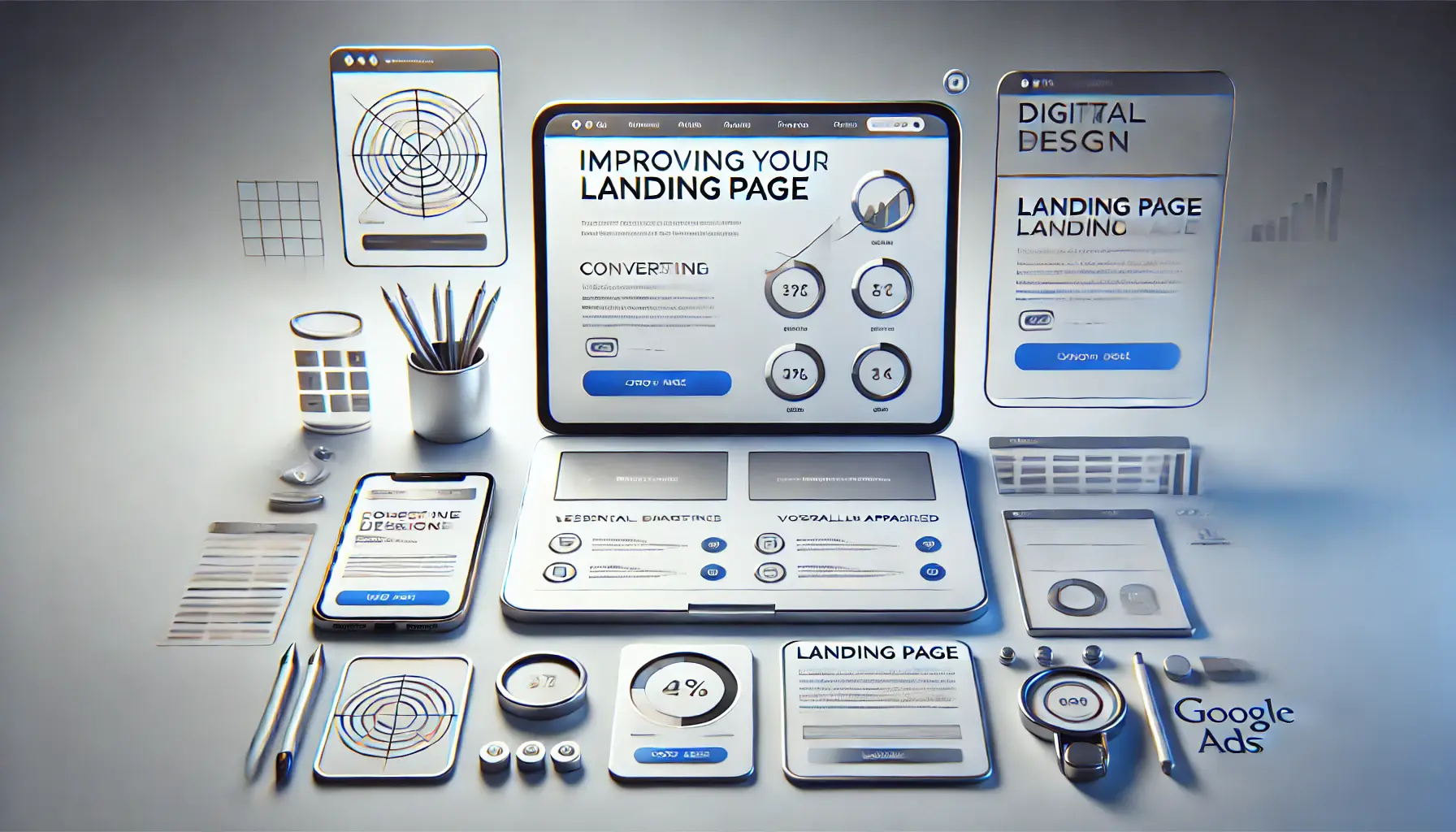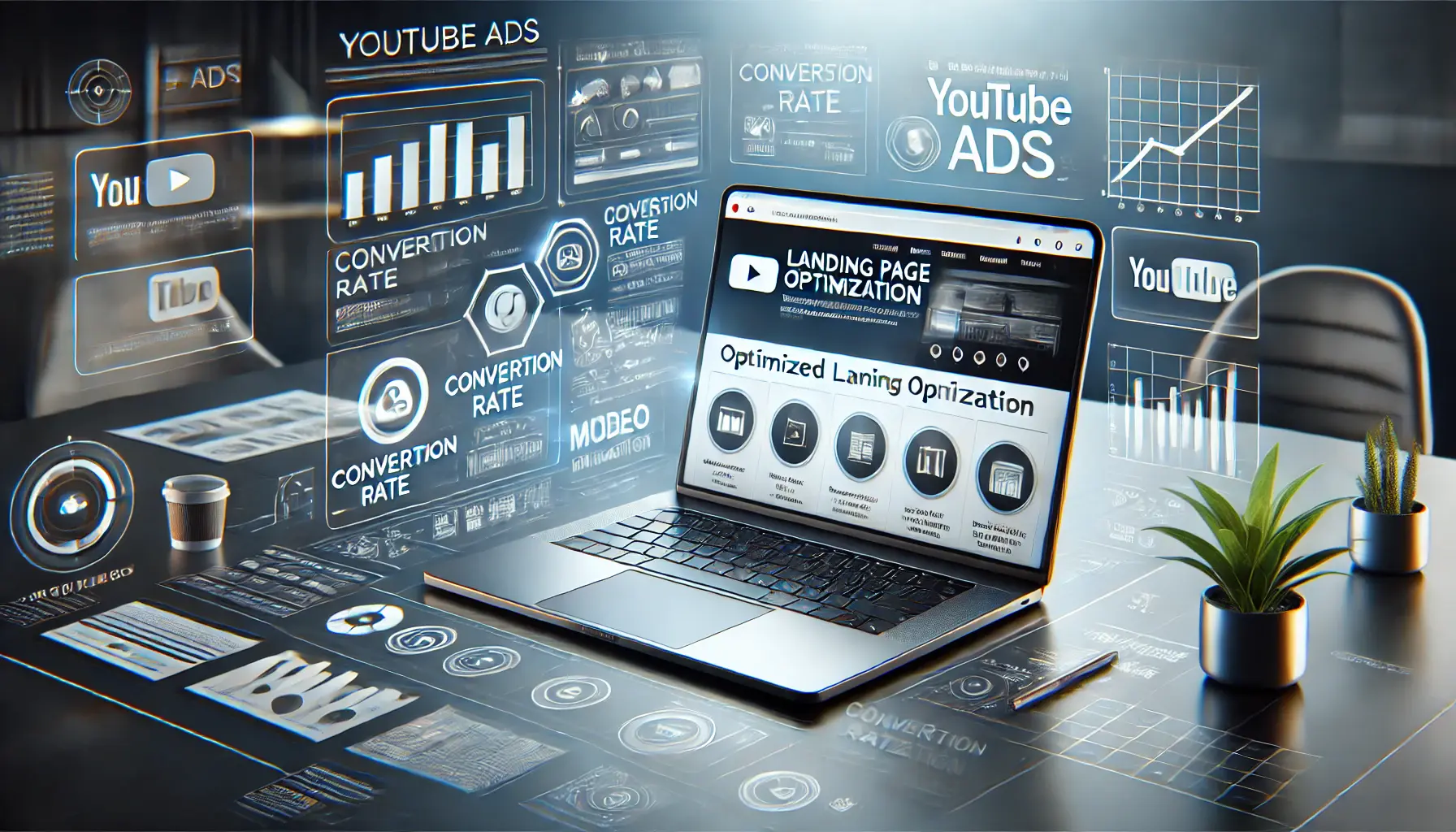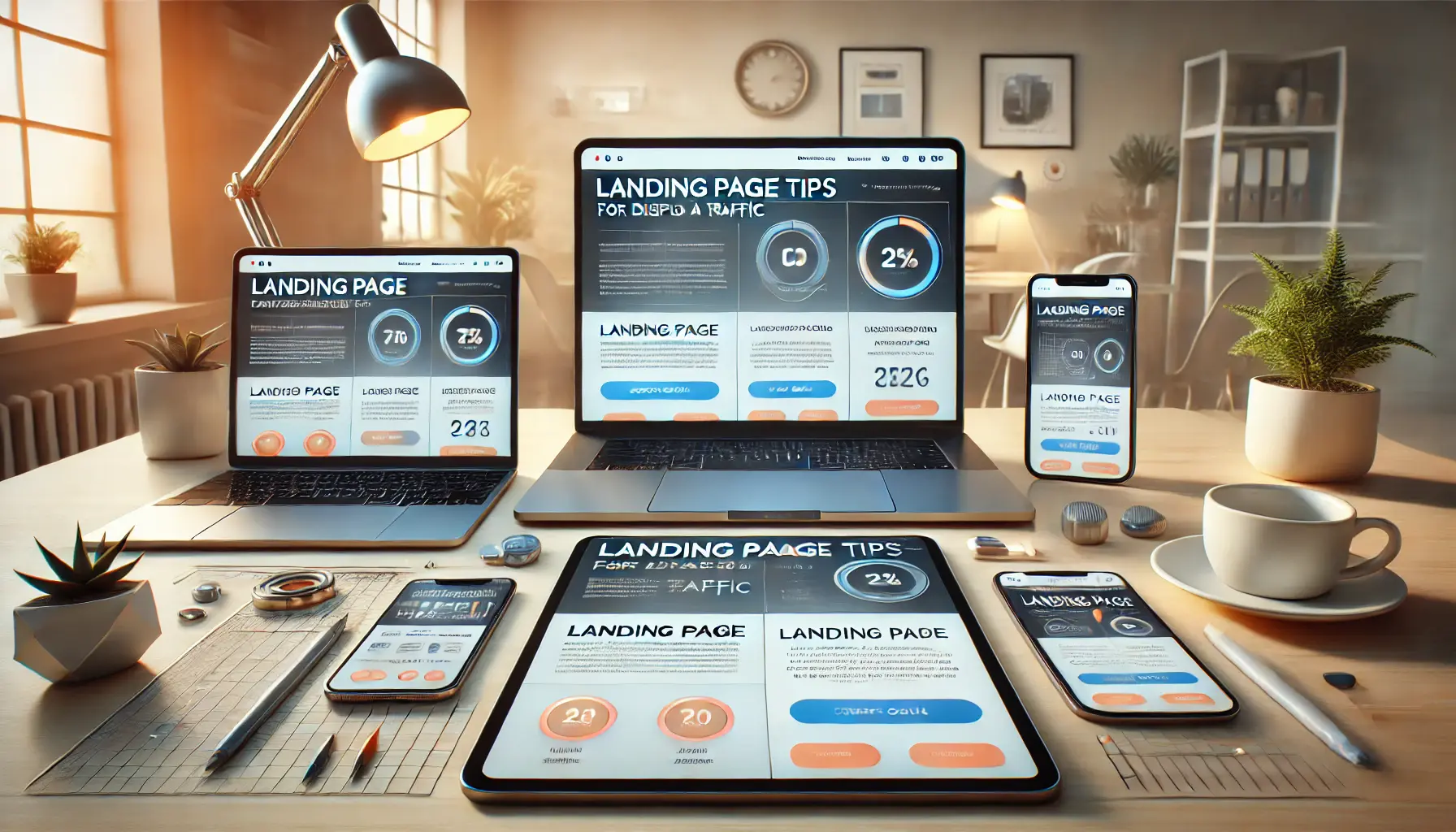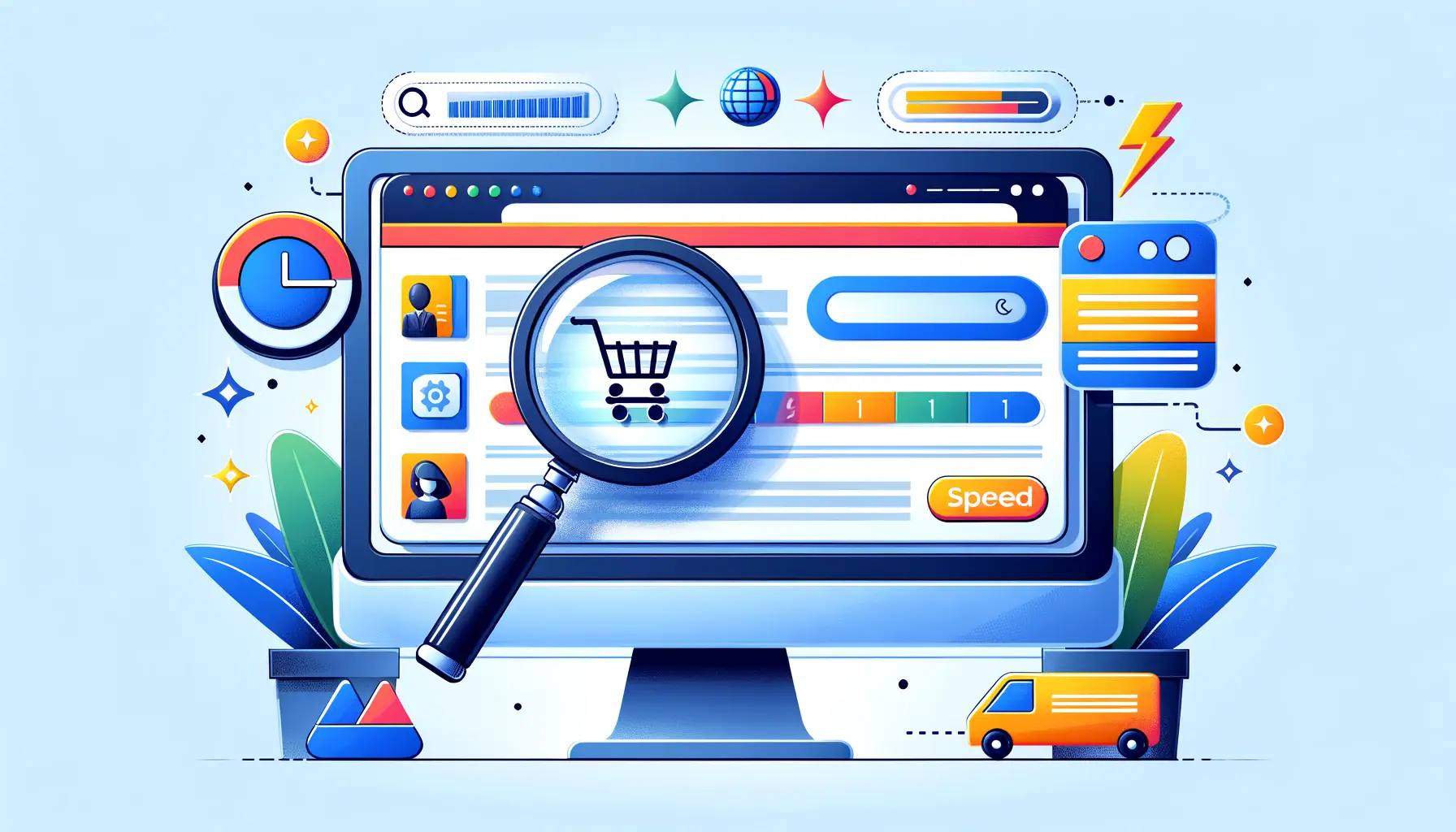The optimization of your landing page is one of the most important steps to ensure that your Google Ads campaigns yield the best possible results.
A well-optimized landing page will not only enhance user experience but also guarantee that visitors take the desired action once they click on your ad.
Whether this is for lead generation, increasing sales, or general engagement, landing page optimization could make or break any campaign.
In the following article, you will learn what you need to know to optimize landing pages on Google Ads by providing actionable insights and best practices you can apply to drive your marketing effort.
- Landing Page Optimization for Google Ads: What is It?
- Key Components of a High-Converting Landing Page
- Best Practices for Landing Page Optimization
- Tools and Analytics for Measuring Landing Page Performance
- Common Mistakes to Avoid in Landing Page Optimization
- Conclusion: Master the Art of Landing Page Optimization on Google Ads
- Frequently Asked Questions About Landing Page Optimization for Google Ads
Landing Page Optimization for Google Ads: What is It?
Landing page optimization involves improving every possible element of your landing page to enhance its conversion potential, turning visitors into customers or leads.
When it comes to using Google Ads, it is all about providing a seamless and relevant experience for users once they click through to your ad.
The more optimized your landing page, the better your Quality ScoreA metric used by Google Ads to rate the relevance and quality of keywords and ads. can be, potentially lowering CPCCost-per-click, the amount paid each time a user clicks on an ad. and improving your ad ranking.

Illustration of a landing page design in digital advertising, with emphasis on conversion and user engagement.
Understanding Landing Pages in Advertising
In digital advertising, a landing page is usually the first page that any user will see after they click an ad.
Unlike the homepage or other general web pages of a website, landing pages are highly targeted, with one focus, usually centered around a particular product, service, or campaign goal.
For example, when running a Google Ads campaign advertising a discount on a product, the landing page should clearly state the offer and make it extremely easy for users to take action.

An illustration of a digital dashboard showcasing optimization metrics for Google Ads campaigns.
Why Optimization Matters in Ensuring Success with Google Ads
Every time Google decides how well your ad will perform, it is based on a combination of factors, including the quality of the landing page.
By optimizing a landing page, the ad copy aligns with the user experience, creating a seamless journey.
This gives users the best opportunity to stay on the page, interact with your content, and complete the desired action—whether it’s filling out a form or making a purchase.
An optimized page also leads to better ad performance, which can reduce your advertising costs and boost return on investment (ROI).
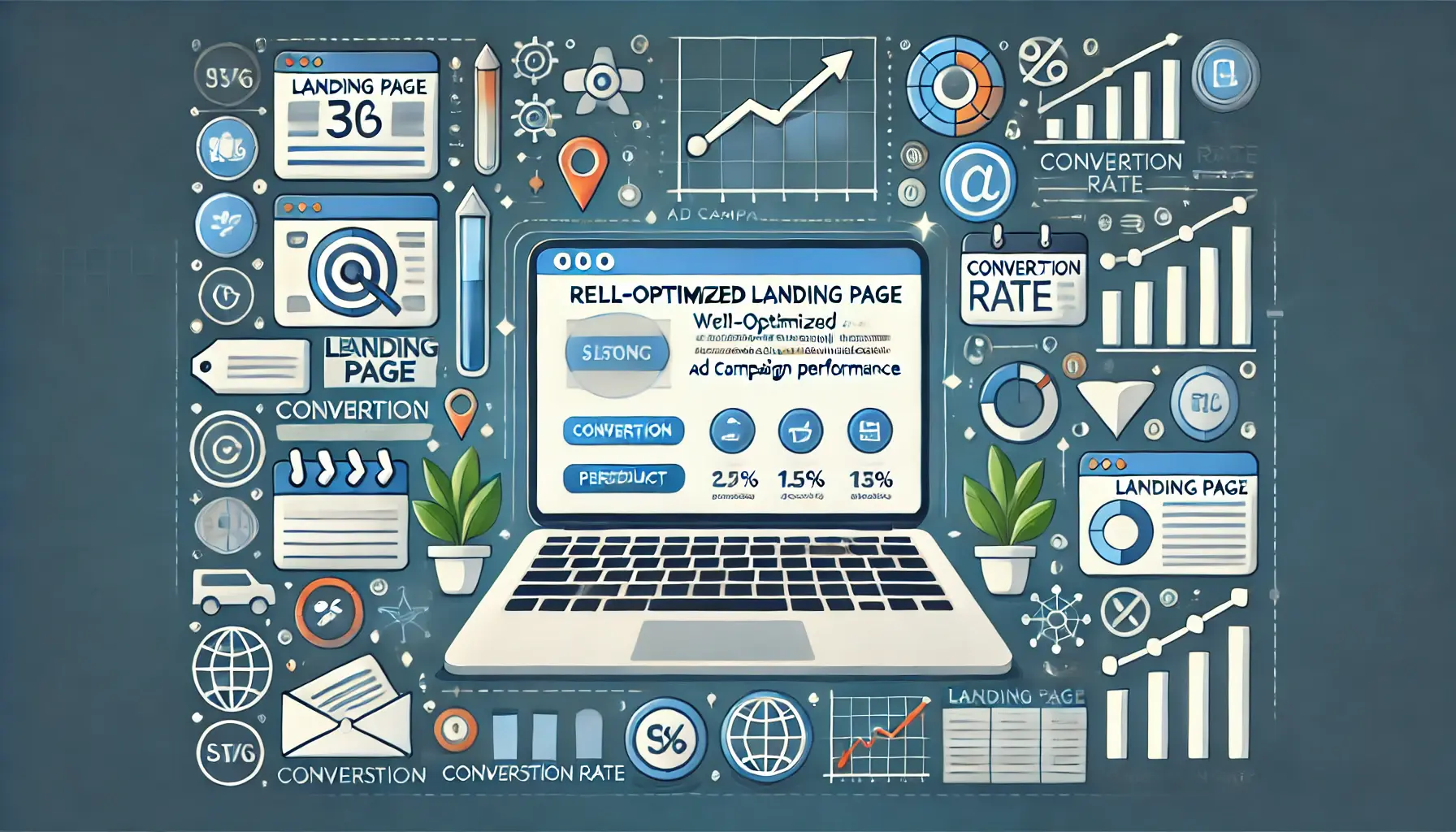
Illustration of a well-optimized landing page playing a crucial role in ad campaign performance.
The Role of Landing Pages in Ad Campaign Performance
Your landing page plays a vital role in determining your campaign’s performance.
If visitors find the page confusing, slow, or irrelevant, they will likely leave without converting.
Optimizing your landing page not only improves your ad’s relevance but also increases the likelihood of clicks converting into meaningful actions.
A well-optimized landing page contributes to a higher conversion rate, meaning you can derive more value from the same advertising spend.
Optimizing a landing page can directly impact your Quality Score, improving ad rankings and reducing CPC.

Illustration highlighting the key components of a high-converting landing page for better user engagement and conversions.
Key Components of a High-Converting Landing Page
To fully optimize your landing page for Google Ads, you want to focus on a variety of key elements that directly influence user behavior and conversions.
A high-converting landing page isn’t just about design; it’s about how every aspect of the page encourages users to complete an action.
Now, let’s outline the basic elements that make a landing page work effectively for conversions.
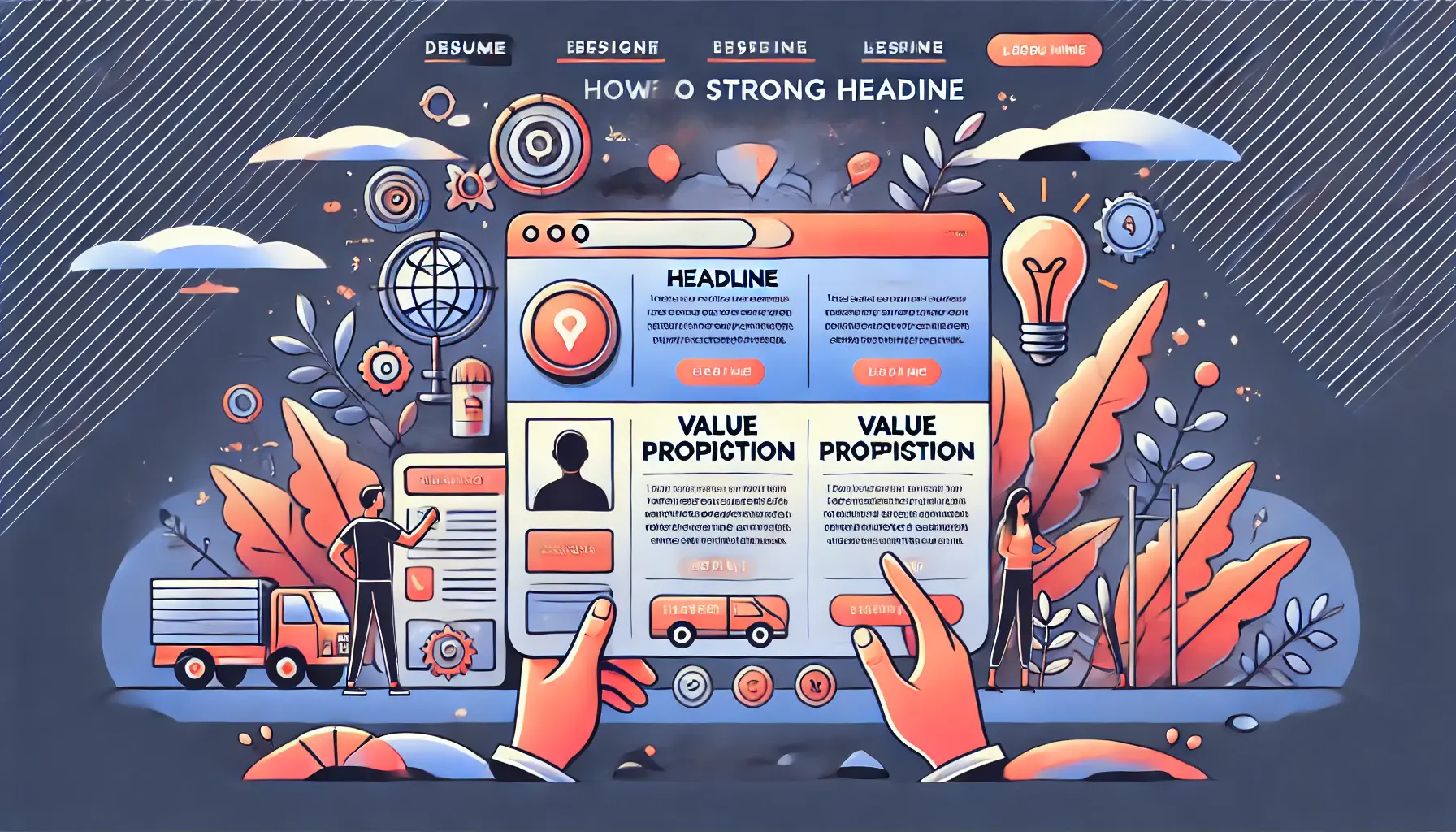
Illustration emphasizing the importance of a strong headline and value proposition on a landing page.
State an Effective Headline and Value Proposition
The first thing people notice upon arriving on your page is the headline.
It needs to capture attention immediately and convey the value proposition clearly.
An effective headline should explain the primary benefit of your product or service and match the intent behind the Google Ad that brought users to your page.
To maximize conversions, ensure that your headline is specific, attractive, and relevant to the visitor’s search intent.
- Be direct: Avoid vague or overly complex headlines. Keep it clear and to the point.
- Match ad copy: Your headline should convey the promise made in your Google Ad. Consistency throughout the user journey is key.
- Bring value upfront: Clearly state what’s in it for the user, from their perspective.

Illustration showcasing the importance of design and user experience (UX) on a landing page.
Design and User Experience (UX)
Design plays a huge role in how users interact with your landing page.
A cluttered or overly complicated design leads to high bounce rates, while an orderly and well-structured page keeps users engaged.
Focus on a minimalist design that is visually appealing and easy to navigate.
- White space: Use white space effectively to avoid overwhelming users and to make the page easier to read.
- Responsiveness: Your landing page should be fully optimized for mobile devices, as a significant portion of traffic may come from mobile users.
- Fast load times: A slow-loading page significantly increases bounce rates. Ensure your landing page loads quickly to keep users engaged.
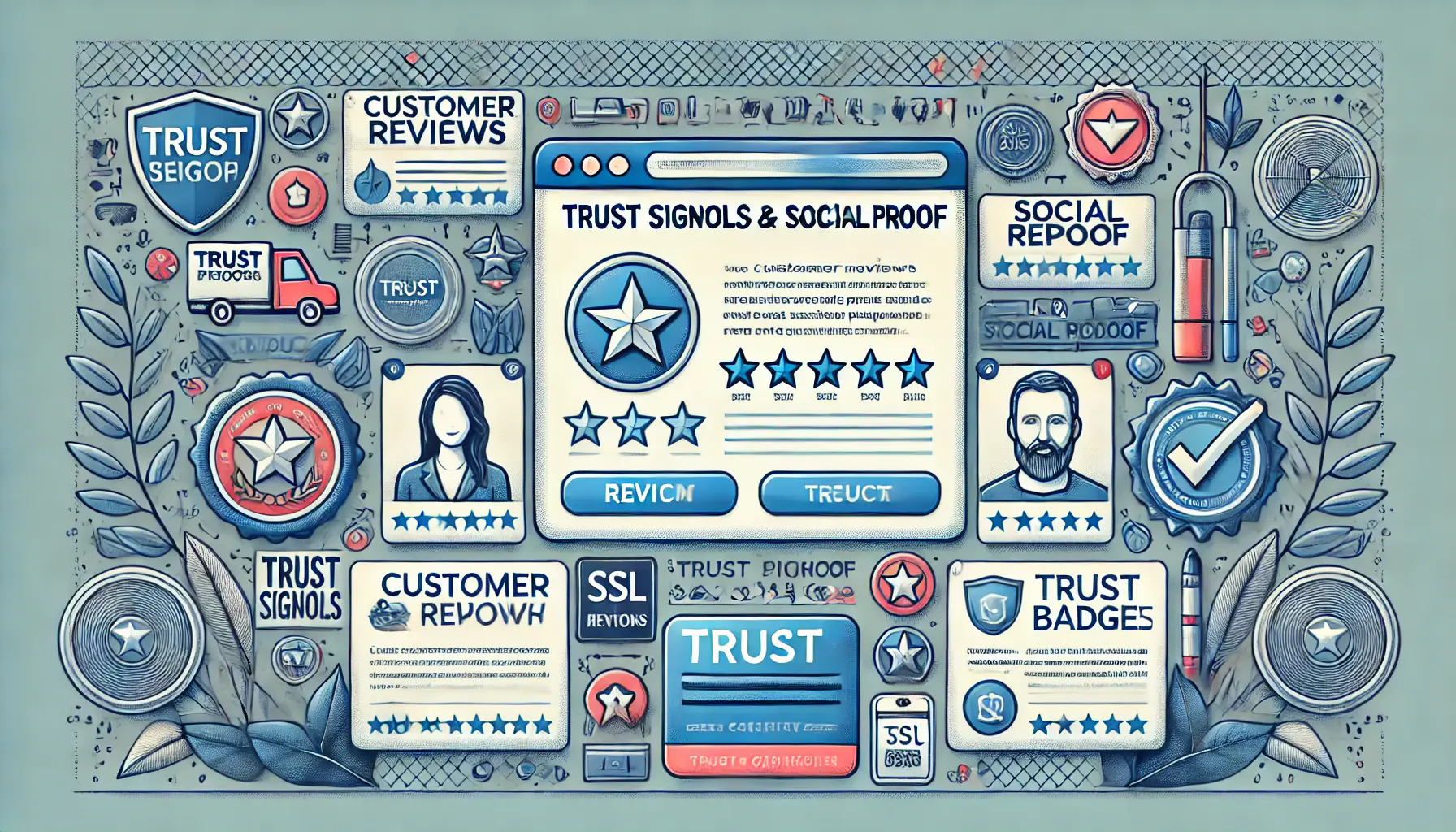
Illustration highlighting the use of trust signals and social proof on a landing page for boosting credibility and conversions.
Trust Signals and Social Proof
Trust is one of the major elements in converting visitors.
Including trust signals, such as testimonials, reviews, or security badges, on your landing page will boost your credibility and help users trust your offer.
Social proof in the form of customer reviews and case studies shows potential customers that others have had success with your product or service.
- Customer testimonials: Use quotes from satisfied customers to build trust with potential customers.
- Trust badges: Add security badges (e.g., SSL certificates) and logos of popular companies you have worked with.
- Case studies: Publish success stories from real customers who benefited from your product or service.
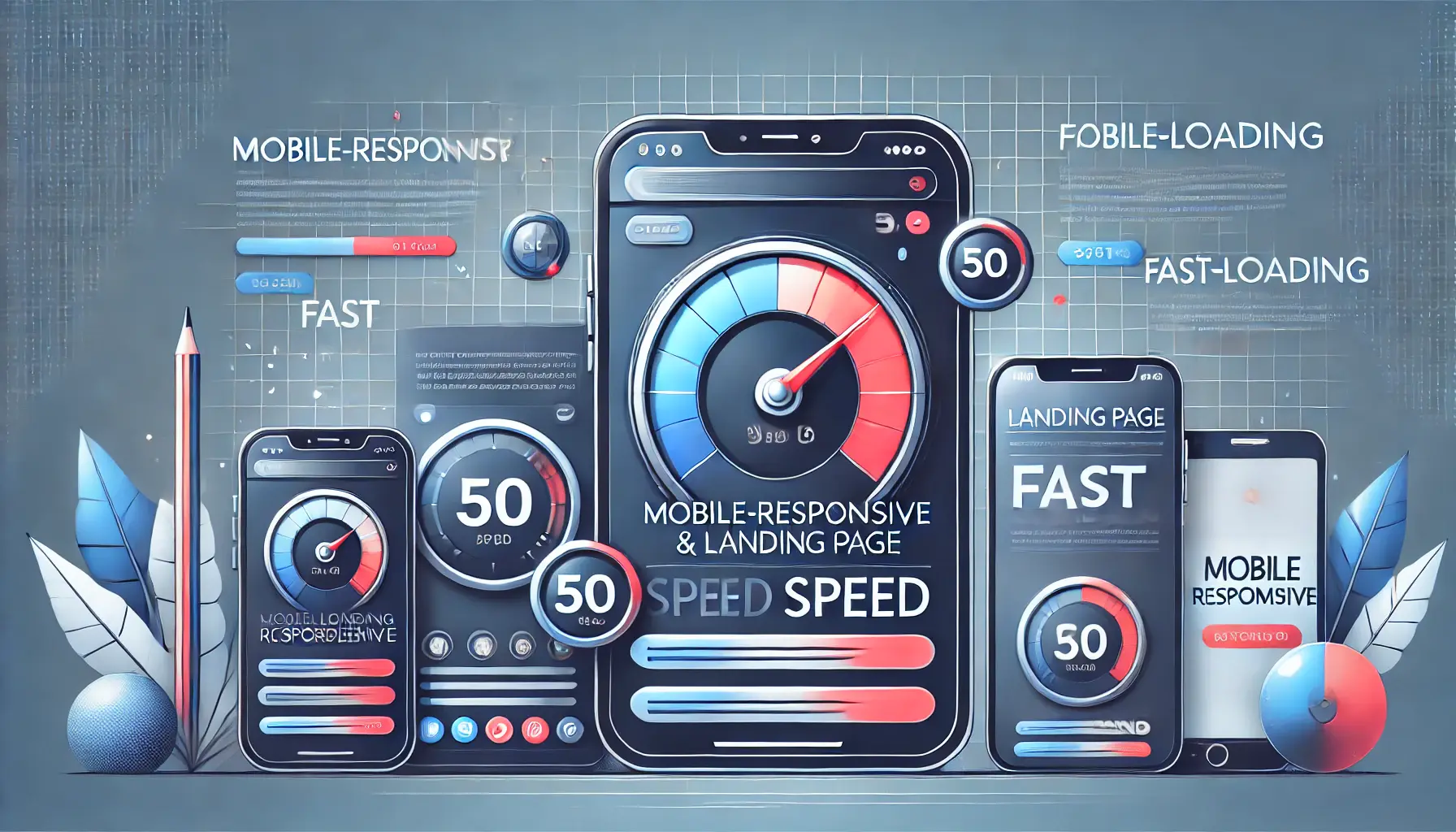
Illustration showcasing the importance of mobile responsiveness and speed for landing pages.
Mobile Responsiveness and Speed
With the rise of mobile devices, having a mobile-responsive landing page is essential.
A responsive design adapts to different screen sizes and provides a smooth experience regardless of the device.
Additionally, page speed is crucial: even a one-second delay in load time can lead to a drop in conversions.
Use tools like Google PageSpeed Insights to monitor and improve your landing page speed.
By incorporating these key elements, your landing page optimization will result in better performance, leading to higher conversion rates and overall success in your Google Ads campaigns.
Each element on the landing page—from headline to call-to-action—must contribute to encouraging users to complete the desired action.
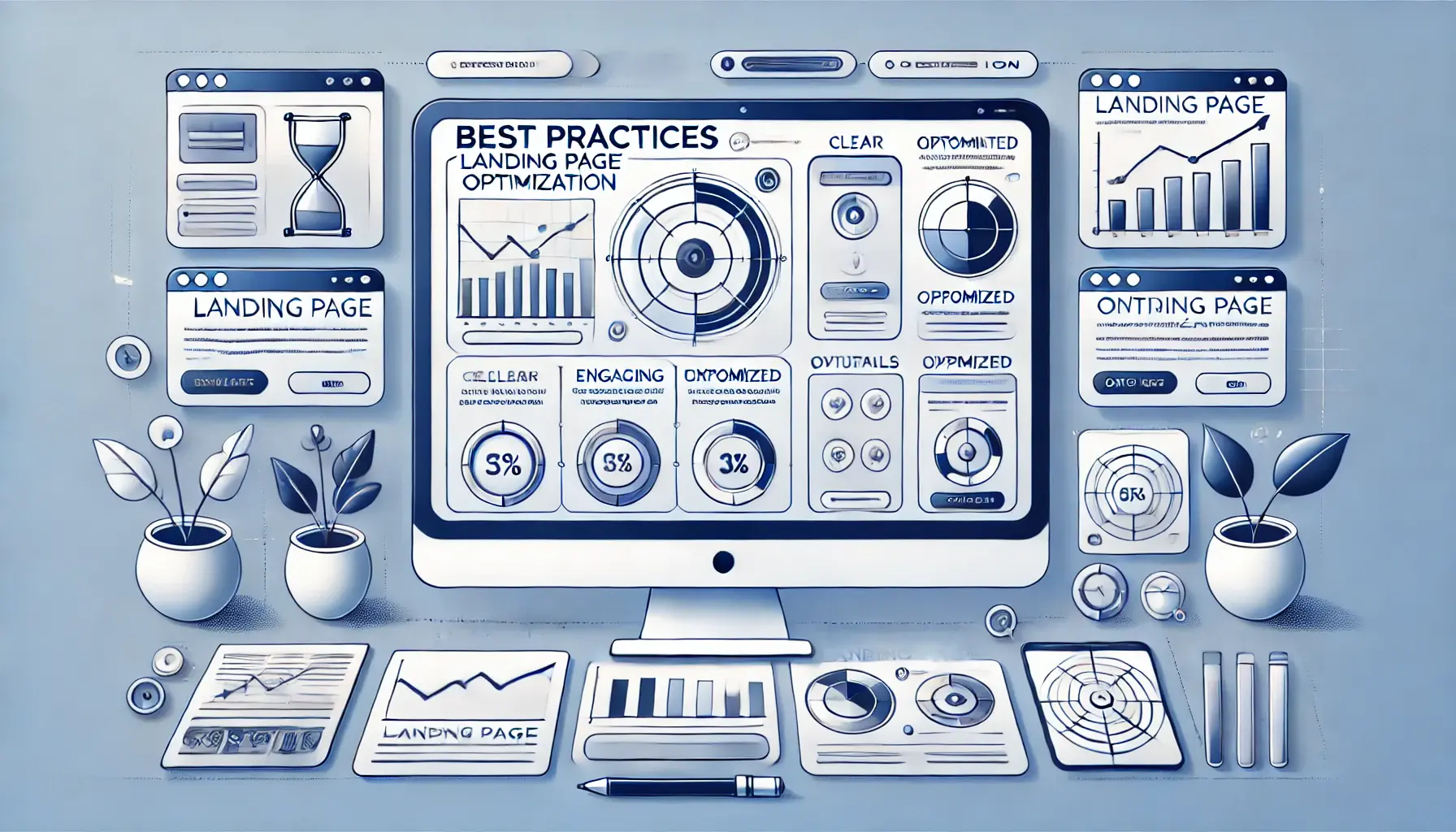
Illustration showcasing best practices for landing page optimization to enhance performance.
Best Practices for Landing Page Optimization
Optimizing your landing page for Google Ads is not a one-time activity; it’s a continuous process.
What you really want to do to ensure that your landing page converts is to focus on best practices that have proven effective over time.
These practices focus on aligning your landing page with your ad, enhancing user experience, and constantly testing for better results.
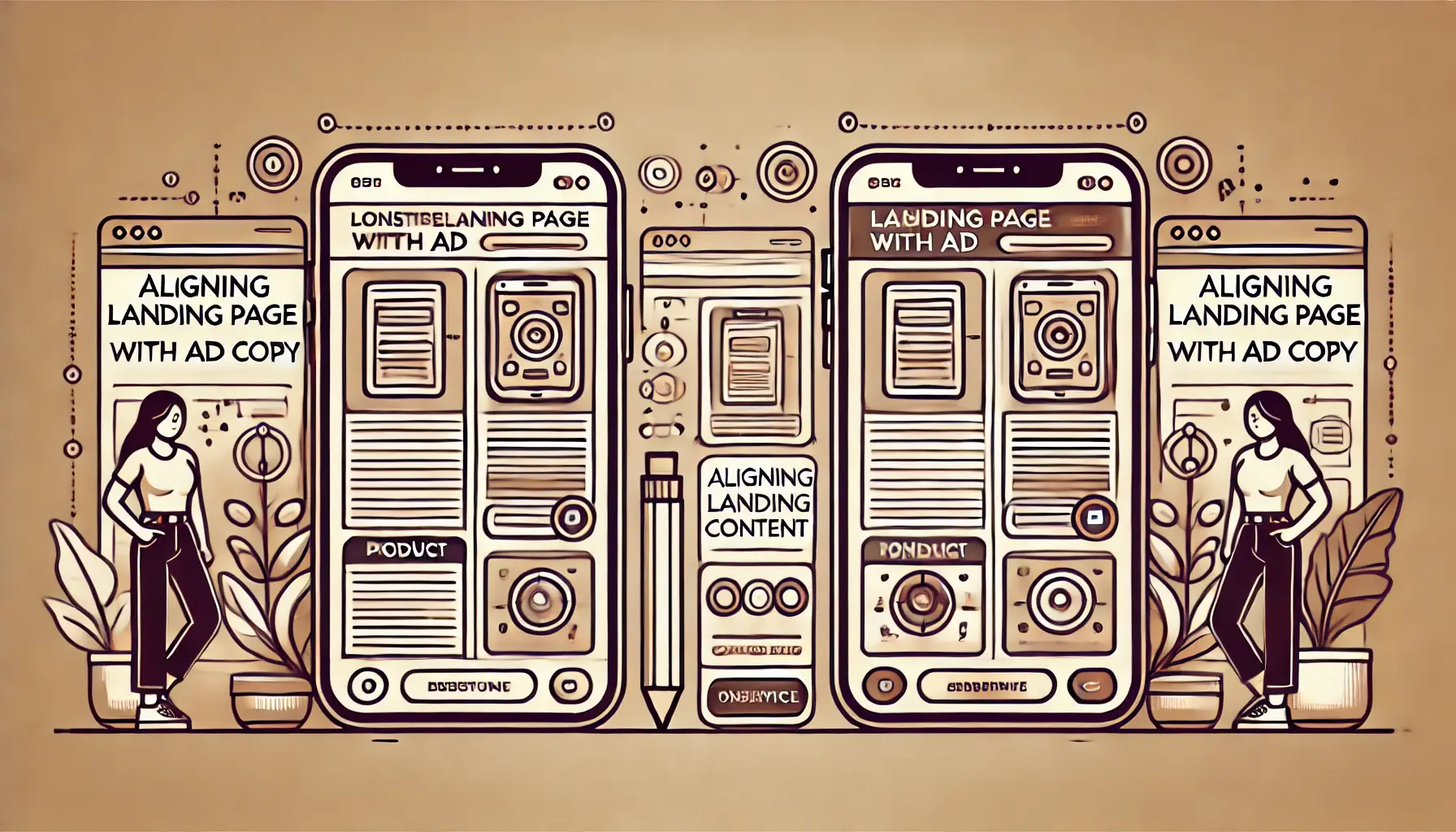
Illustration highlighting the importance of aligning landing pages with ad copy for a seamless user experience.
Aligning Landing Pages with Ad Copy
One of the most important best practices for landing page optimization is aligning the landing page with the ad copy.
When a user clicks on your ad, they expect to find precisely what was stated in the ad.
This builds user confidence, enhances engagement, and ultimately increases conversion rates.
Make sure the landing page headline reflects the ad copy and that the content of the page supports the offer or message communicated in the ad.
- Consistency: Keep your messaging consistent between your Google Ad and the landing page to avoid confusing users.
- Relevance: Ensure the offer or promotion in the ad is immediately clear when users land on the page.
- Personalization: Use dynamic text replacement (DTR) to match keywords in your ad with the landing page content, creating a more personalized experience for each visitor.
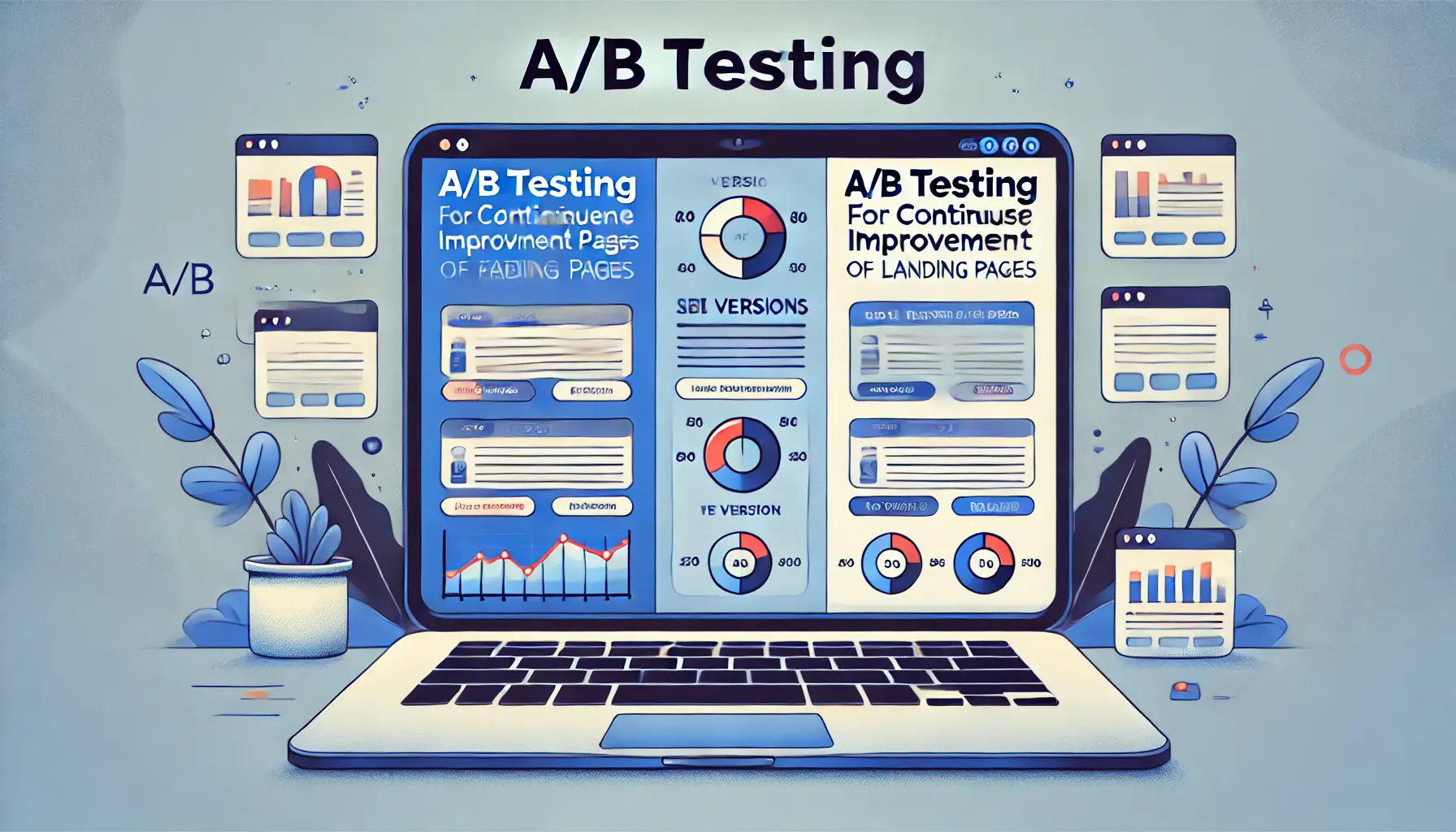
Illustration demonstrating the process of A/B testing for optimizing landing pages.
Using A/B Testing for Continuous Improvement
A/B testing is a crucial part of landing page optimization.
Testing different elements on your landing page, whether it’s the headline, images, or calls-to-action (CTAs), will show you which version gives the best results in terms of conversions.
Running A/B tests regularly allows you to make data-driven decisions and continuously improve your landing page’s performance.
- Test headlines: Run different headline variants to see what works best with your target audience.
- Test CTAs: Experiment with different placements, colors, and wording of CTAs to see what works best in driving user action.
- Test visuals: Swap images or videos on your landing page to find the most engaging visuals for your target audience.
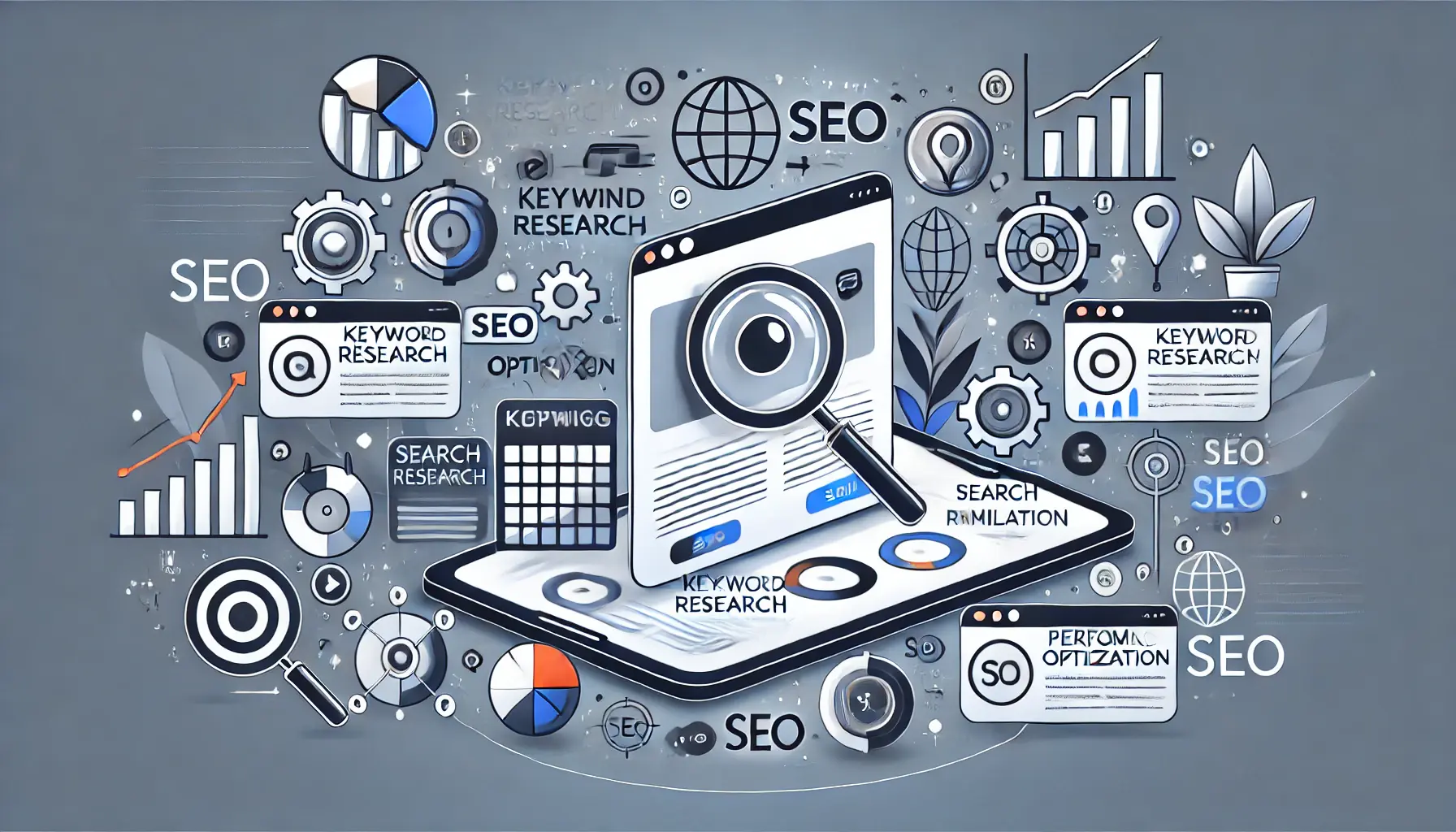
Illustration depicting the process of optimizing landing pages for keywords and SEO to improve search visibility.
Optimizing for Keywords and SEO
Though a landing page is mainly created for conversions, ensuring it is optimized for search engines can generate organic traffic over time.
Placing relevant keywords naturally throughout the page will improve visibility in search results, making it easier for potential customers to find your page outside of paid campaigns.
Be careful not to overstuff keywords; balance relevance with readability.
- Primary and secondary keywords: Use target keywords in key areas such as headlines, meta descriptions, and the body content.
- Focus on user intent: Instead of focusing solely on keywords, optimize for the user’s search intent. Your content should answer the user’s question.
- Optimize page speed: Faster loading times improve both user experience and SEO rankings.
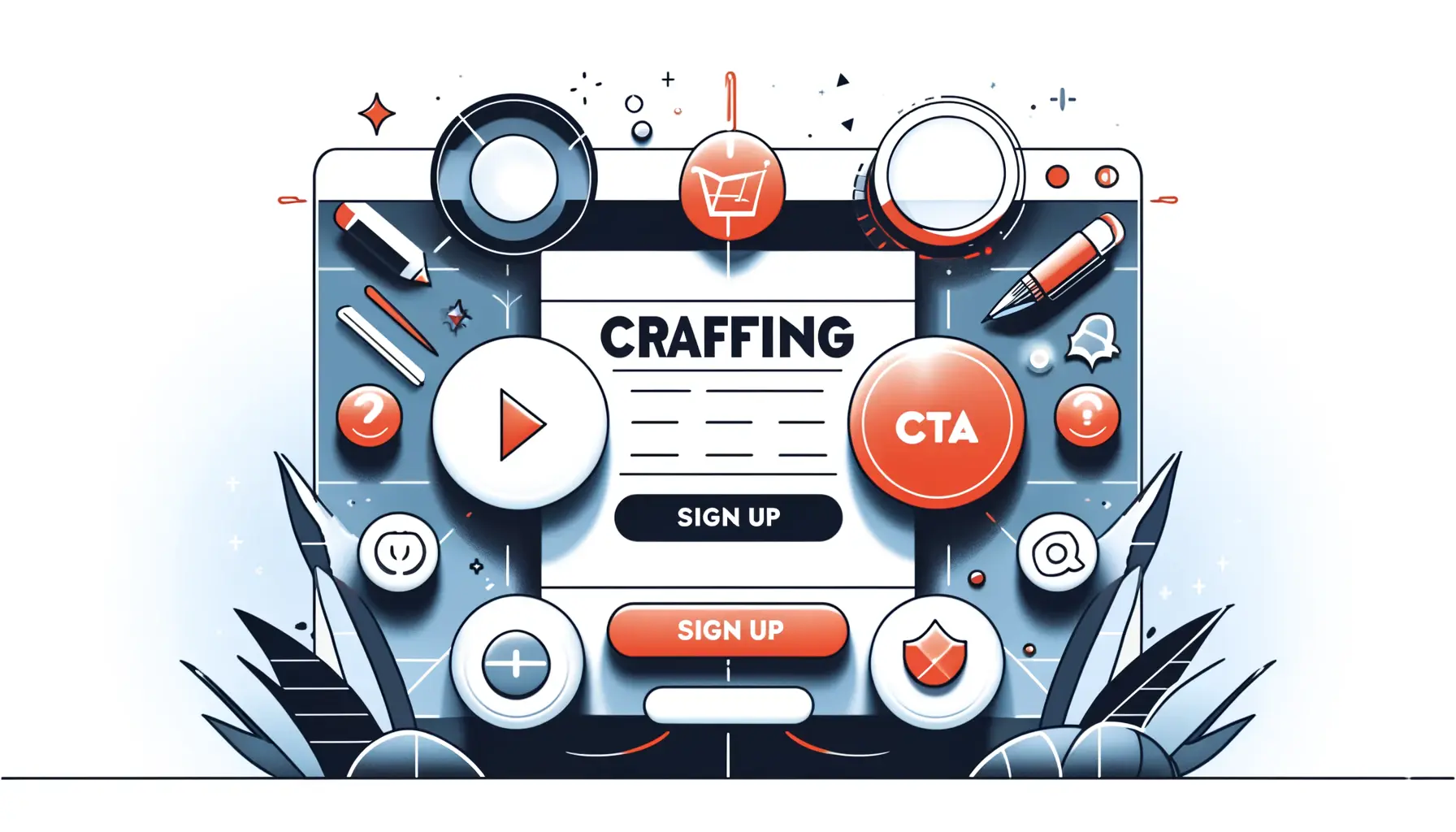
Illustration showing the importance of crafting clear and visible calls-to-action (CTAs) on a landing page.
Crafting Clear Calls-to-Action (CTAs)
Your call-to-action (CTA) is arguably the most important element on your landing page.
It guides the user on what to do next—whether making a purchase, signing up for a newsletter, or downloading a guide.
A clear, concise, and highly visible CTA is essential for driving conversions.
- Keep it simple: Use short, active language that clearly tells users what to do next, such as “Sign Up Now” or “Get Your Free Trial.”
- Make it visible: Use contrasting colors and larger fonts to make the CTA stand out on the page.
- Reduce friction: Don’t ask for too much information or make the process complicated. The simpler the action, the higher the conversion rate.
By considering these best practices, you will continually improve your landing page optimization for higher conversion rates and better performance in your Google Ads campaign.
Consistency between your ad and landing page content increases user trust and leads to higher conversions.

Illustration highlighting the use of tools and analytics for tracking and optimizing landing page performance.
Tools and Analytics for Measuring Landing Page Performance
Monitoring and analyzing your landing page performance plays an important role in understanding what works and what doesn’t.
By observing key metrics and making data-driven decisions, you can optimize your landing page for Google Ads more effectively.
From tracking conversions to understanding user behavior, these tools provide valuable insights to help you iterate on your landing page and increase conversion rates over time.
Illustration demonstrating the use of Google Analytics and conversion tracking for optimizing landing page performance.
How to Use Google Analytics and Conversion Tracking
Google Analytics is one of the most widely used tools for tracking performance on a landing page.
It allows you to track key metrics, such as bounce rateThe percentage of visitors who leave a webpage without interacting or visiting other pages., session duration, and conversion rates, to better understand visitor interactions on your page.
By integrating Google Ads with Google Analytics, you can also measure conversions and evaluate the efficiency of your ad campaigns.
Here’s how you can use it effectively:
- Tracking Conversion Goals: Set up goals to track form submissions, product purchases, or newsletter subscriptions.
- Analyzing Traffic Sources: Identify whether your traffic comes from paid ads, organic search, or social networks.
- Monitoring Bounce Rates: A high bounce rate may indicate that your landing page content isn’t engaging enough or lacks relevance, signaling a need for improvement.

Illustration demonstrating the use of heatmaps and user behavior analysis to optimize landing page performance.
Heatmaps and User Behavior Analysis
Tools such as Hotjar and Crazy Egg allow you to observe user behavior in detail through heatmaps, click maps, and session recordings.
These insights help you understand which parts of your page work well and which areas need improvement.
Heatmaps, in particular, are great for optimizing landing pages and enhancing user experience.
- Click maps: Identify which parts of your landing page get the most clicks, helping you determine if your CTAs and key elements are well-placed.
- Scroll maps: Understand how far users scroll down your page to evaluate whether your content is too long or unengaging.
- Session recordings: Watch real-time recordings of user interactions to identify potential issues with navigation, design, or user flow.
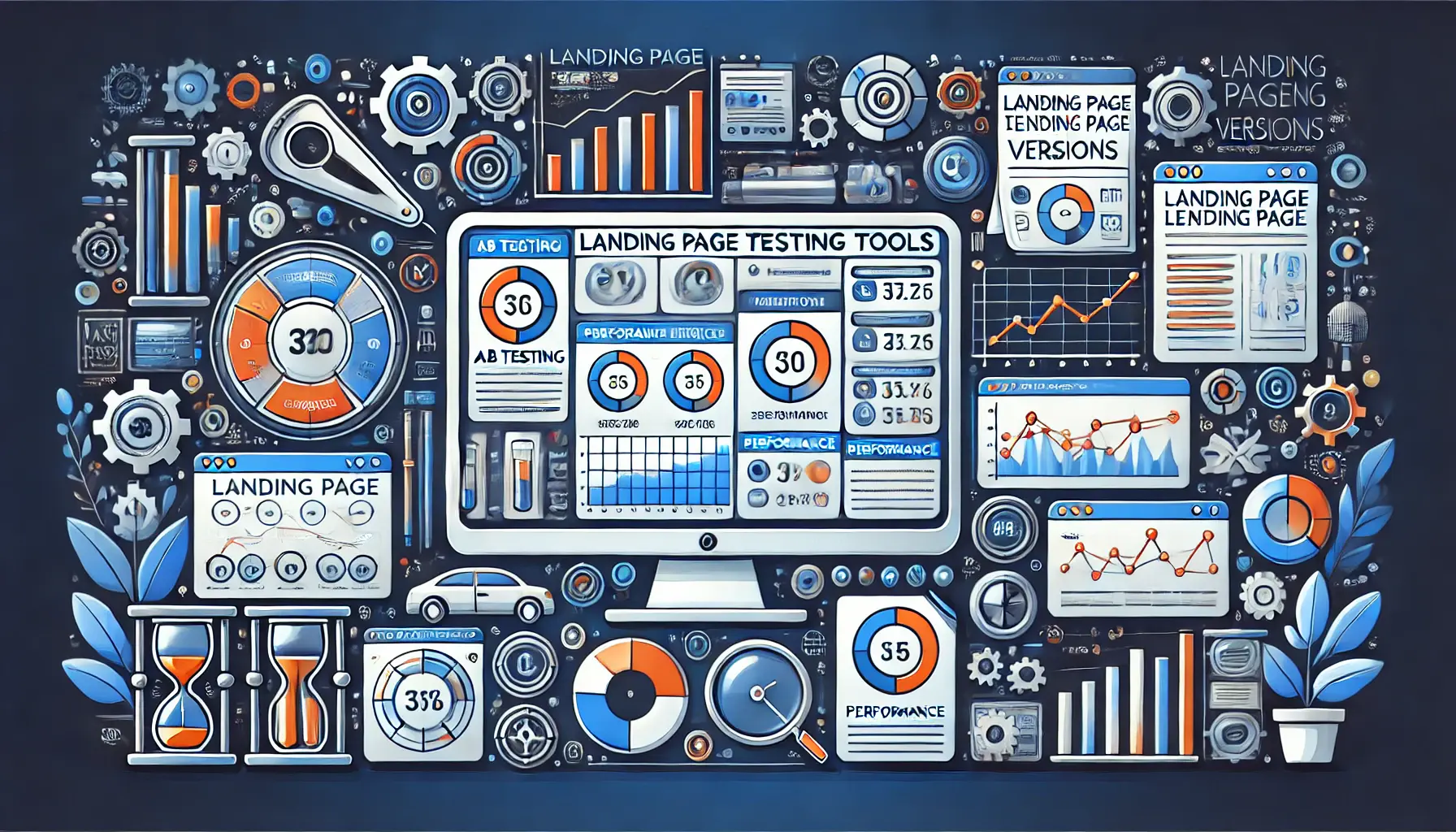
Illustration showcasing the use of testing tools to optimize landing page performance.
Landing Page Testing Tools
To continuously improve your landing page, testing tools such as Google Optimize, Unbounce, and Optimizely allow you to run A/B and multivariate tests.
These tools help you compare different versions of your landing page to see which one generates better conversion rates.
- Google Optimize: Free to use, integrates with Google Analytics, and allows you to test multiple elements on your page.
- Unbounce: A robust platform for building, testing, and optimizing landing pages without needing a developer’s assistance.
- Optimizely: A full-featured platform for running A/B and multivariate tests to maximize conversion rates.

Illustration representing the importance of tracking key metrics such as bounce rate, conversion rate, and engagement for landing page success.
Key Metrics: Bounce Rate, Conversion Rate, and Engagement
Several key metrics help you assess the performance of your landing page and identify areas for optimization:
- Bounce rate: The percentage of visitors who leave your site after viewing only one page. A high bounce rate may suggest that your landing page content isn’t relevant or there are issues with the user experience.
- Conversion rate: The percentage of visitors who complete the desired action, such as filling out a form or making a purchase. A low conversion rate indicates that there are barriers preventing users from converting.
- Engagement metrics: Metrics like average session duration, pages per session, and scroll depth offer insights into how users interact with your landing page and how engaging the content is.
By using these tools and tracking these metrics, you’ll gain valuable insights into your landing page performance and make informed decisions to improve your landing page optimization for Google Ads campaigns.
Google Analytics and heatmaps are indispensable tools for understanding and optimizing landing page performance.
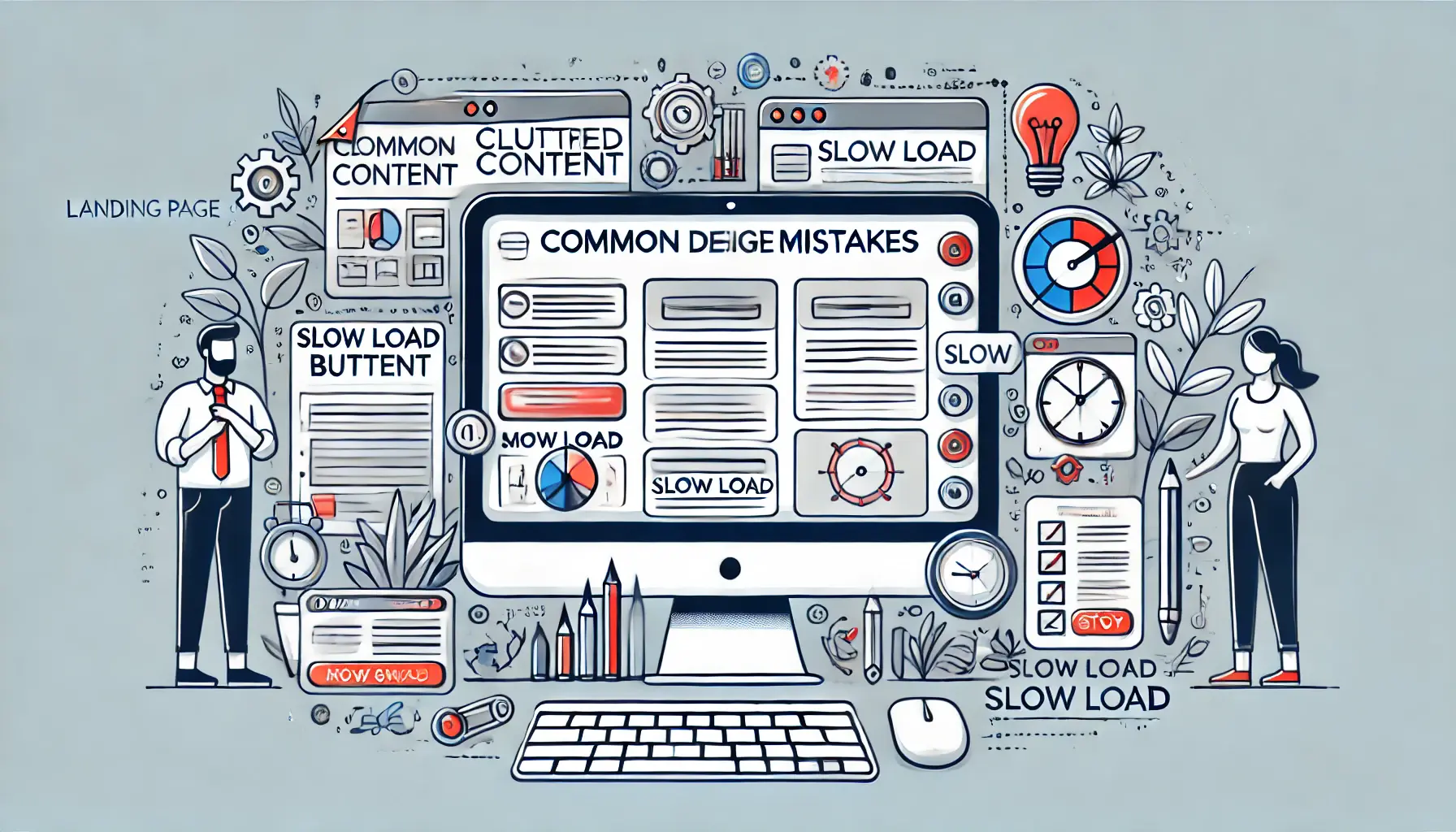
Illustration showing common mistakes in landing page optimization, such as cluttered content and disorganized design.
Common Mistakes to Avoid in Landing Page Optimization
Even with the best of intentions, common mistakes marketers make in landing page optimization can be quite misleading.
These missteps can certainly affect your conversion rates and overall campaign performance in Google Ads.
By being aware of these pitfalls, you can avoid them and design a more efficient and conversion-oriented landing page.
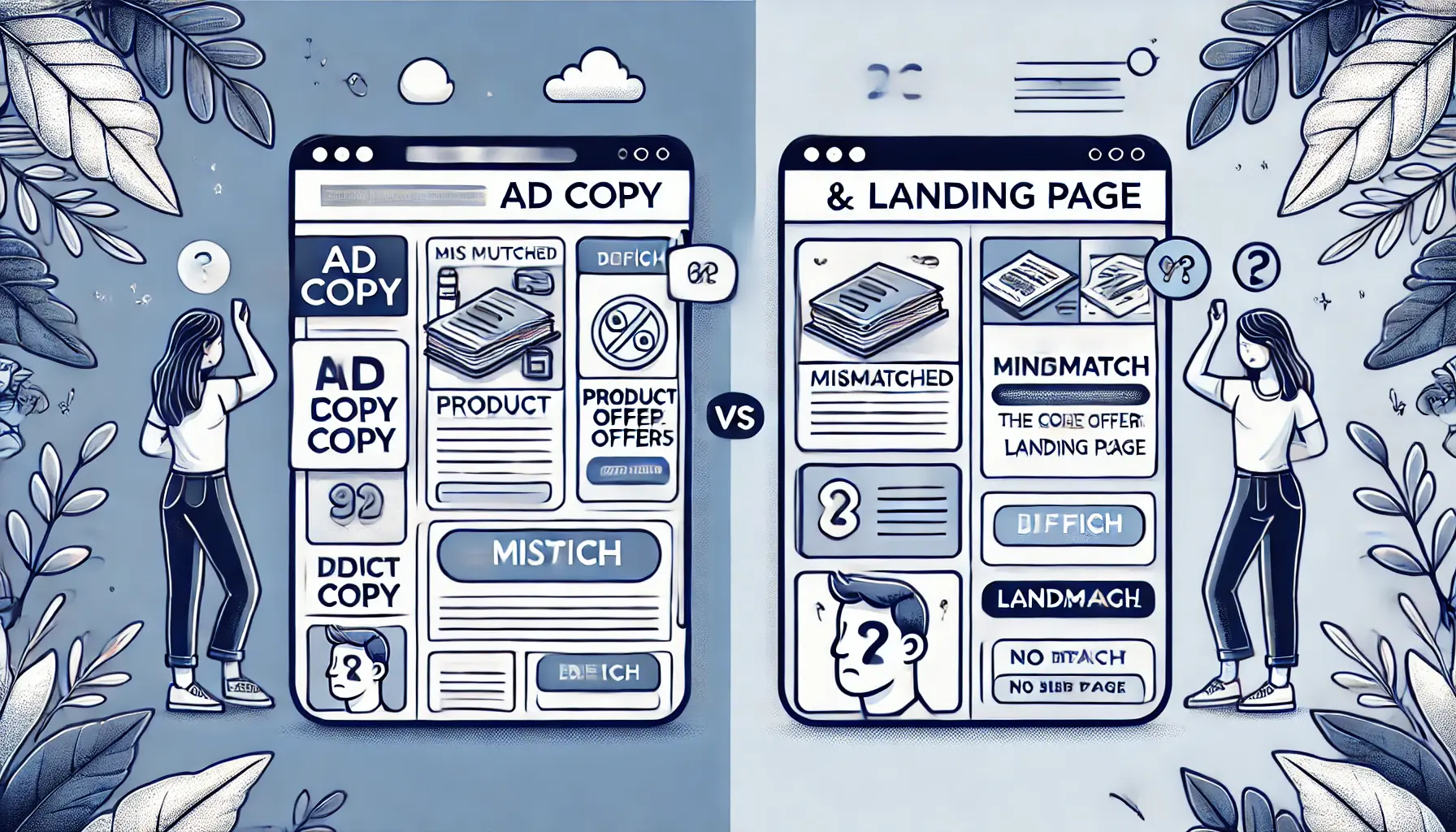
Illustration highlighting the issue of mismatched ad copy and landing page content.
Mismatched Ad Copy and Landing Page Content
One of the most common mistakes made in landing page optimization is the misalignment between the ad copy and the landing page content.
When users click on an ad, they expect to see content that directly relates to the message or offer in the ad.
If your landing page doesn’t deliver on that, users are likely to leave without taking any action, leading to a high bounce rate.
Consider these tips to help your landing page perform better:
- Consistency: Ensure that your landing page mirrors the message, tone, and offer of your Google Ad, including the headline.
- Align Visuals and Design: The look and feel of your ad need to be reflected on your landing page for a cohesive experience.
- Maintain Focus: Don’t overload your landing page with too many elements. Keep the page focused on one goal that matches the ad’s intent.

Illustration showing the negative impact of overloading a landing page with too much information.
Overloading Pages with Information
Another common mistake is overloading your landing page with too much information.
While it’s essential to communicate your offer clearly, overwhelming users with too much detail, excessive images, or long text blocks can confuse them and cause them to leave.
Here’s what to consider:
- Use concise copy: Keep your content simple and focused on the key points that drive users to take action.
- Visual hierarchy: Structure your landing page with clear headings, bullet points, and enough white space to make it easy to navigate.
- Balanced imagery: Avoid overloading the page with too many images or videos that could distract users from converting.
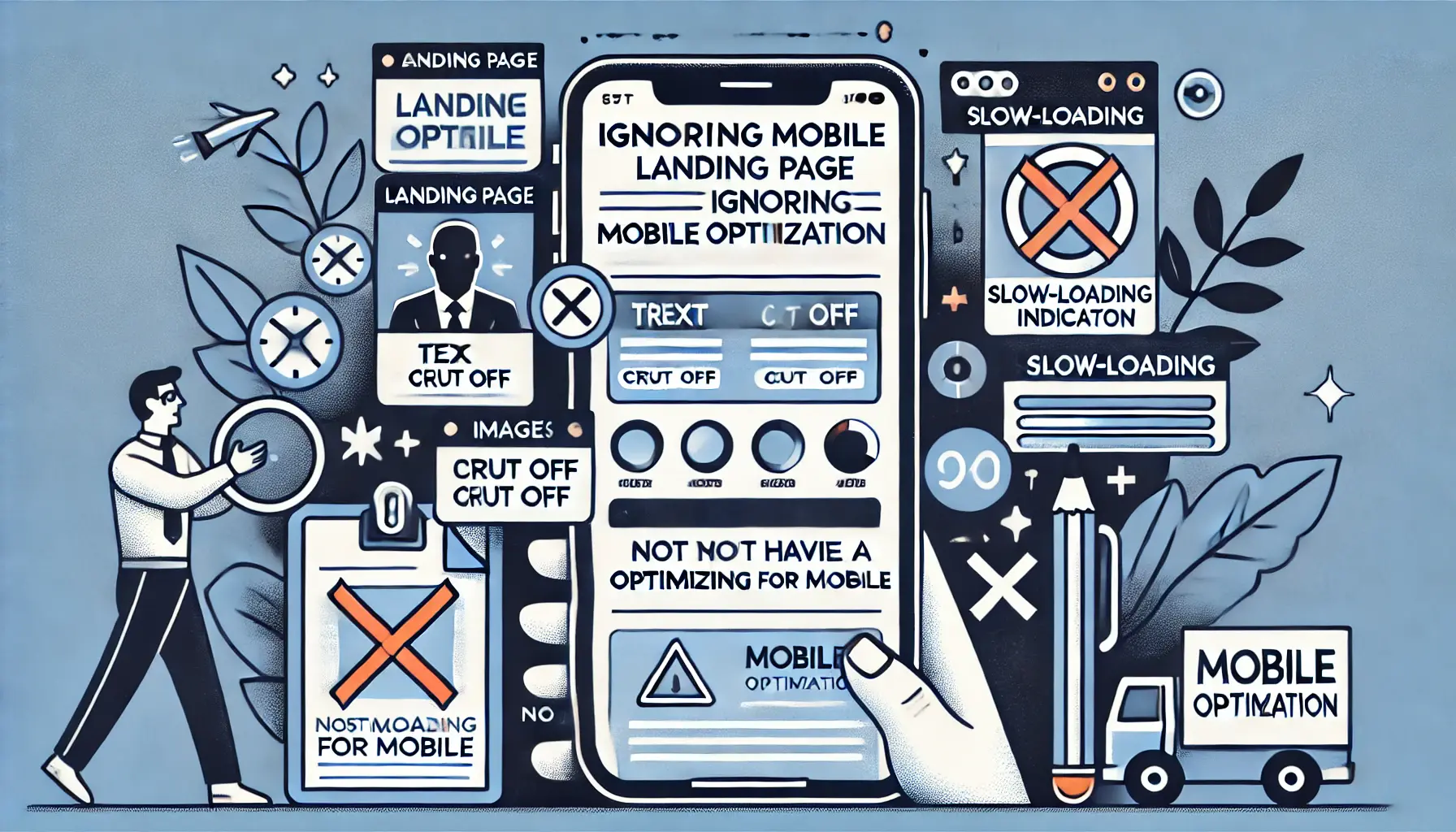
Illustration showing the negative impact of ignoring mobile optimization for landing pages.
Ignoring Mobile Optimization
More than half of all internet traffic comes from mobile users, so a landing page that isn’t optimized for mobile means lost customers.
Ensure you do the following to optimize for mobile users:
- Responsive design: Your landing page should adapt to different screen sizes and provide a smooth experience across all devices.
- Test on various devices: Regularly test your landing page on different mobile devices and browsers to ensure compatibility and performance.
- Speed matters: Optimize your landing page for fast loading times on mobile to retain users and reduce bounce rates.

Illustration representing the negative impact of lack of testing and iteration in landing page optimization.
Lack of Testing and Iteration
Without regular testing, you won’t know what works best for your audience, and you may miss opportunities to improve conversions.
Here are some steps to avoid this mistake:
- Run A/B tests: Occasionally test different versions of your landing page to see which elements drive the highest conversion rates.
- Analyze user behavior: Use heatmaps and session recordings to understand how users interact with your page.
- Iterate based on data: Make changes to your landing page based on test results and user behavior analysis, constantly iterating based on real data.
By avoiding these common mistakes, you can significantly improve your landing page optimization for Google Ads and boost your conversion rates.
Mismatched ad copy and landing page content can lead to higher bounce rates and lower conversion rates.
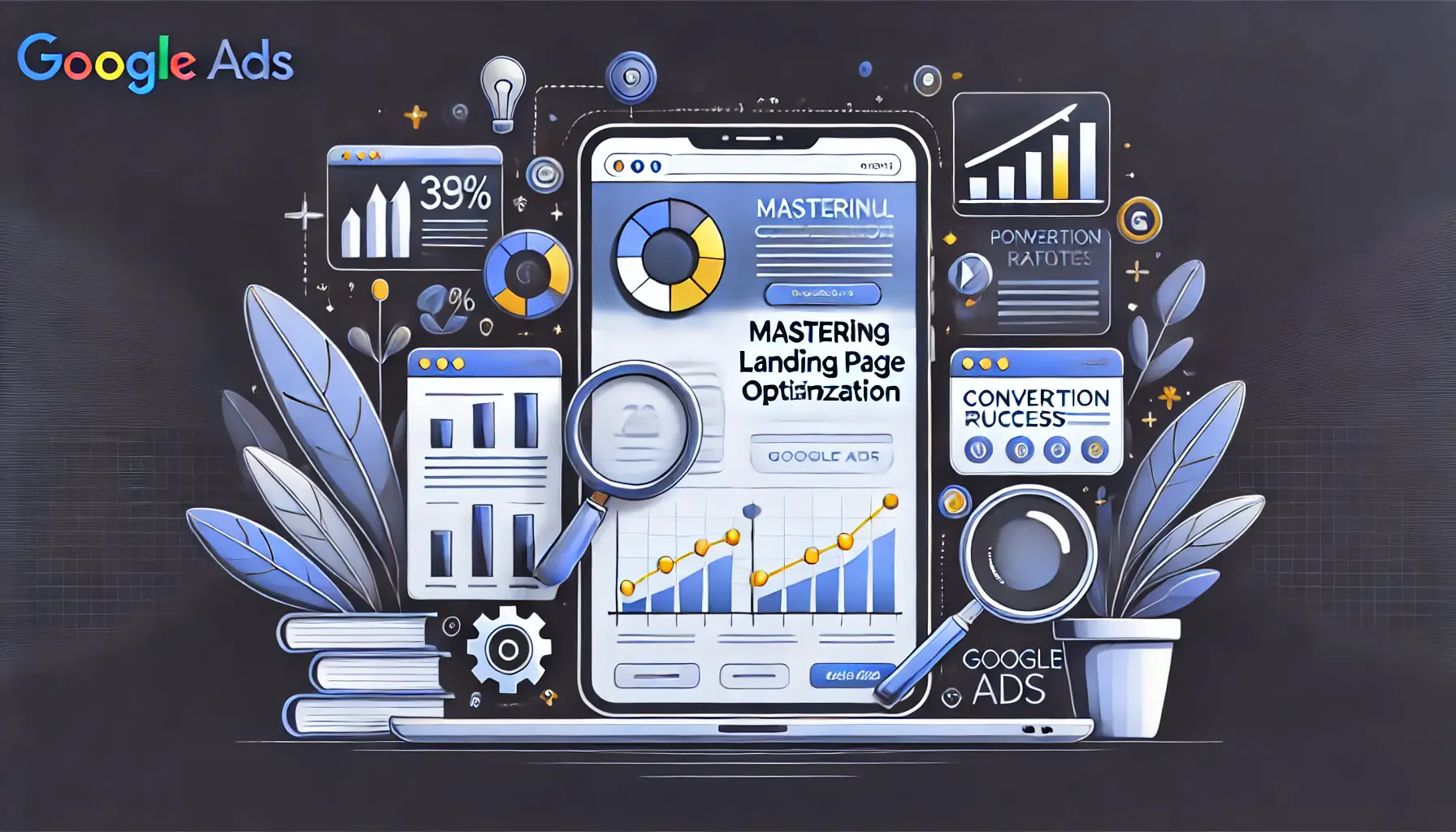
Illustration depicting the mastery of landing page optimization for improved performance on Google Ads.
Conclusion: Master the Art of Landing Page Optimization on Google Ads
In this highly competitive digital marketing landscape, perfecting your landing page optimization is crucial.
A properly optimized landing page will significantly increase conversion rates, reduce bounce rates, and create more engaging interactions with your audience.
By focusing on the key elements discussed throughout this article, you can develop landing pages that consistently deliver results.
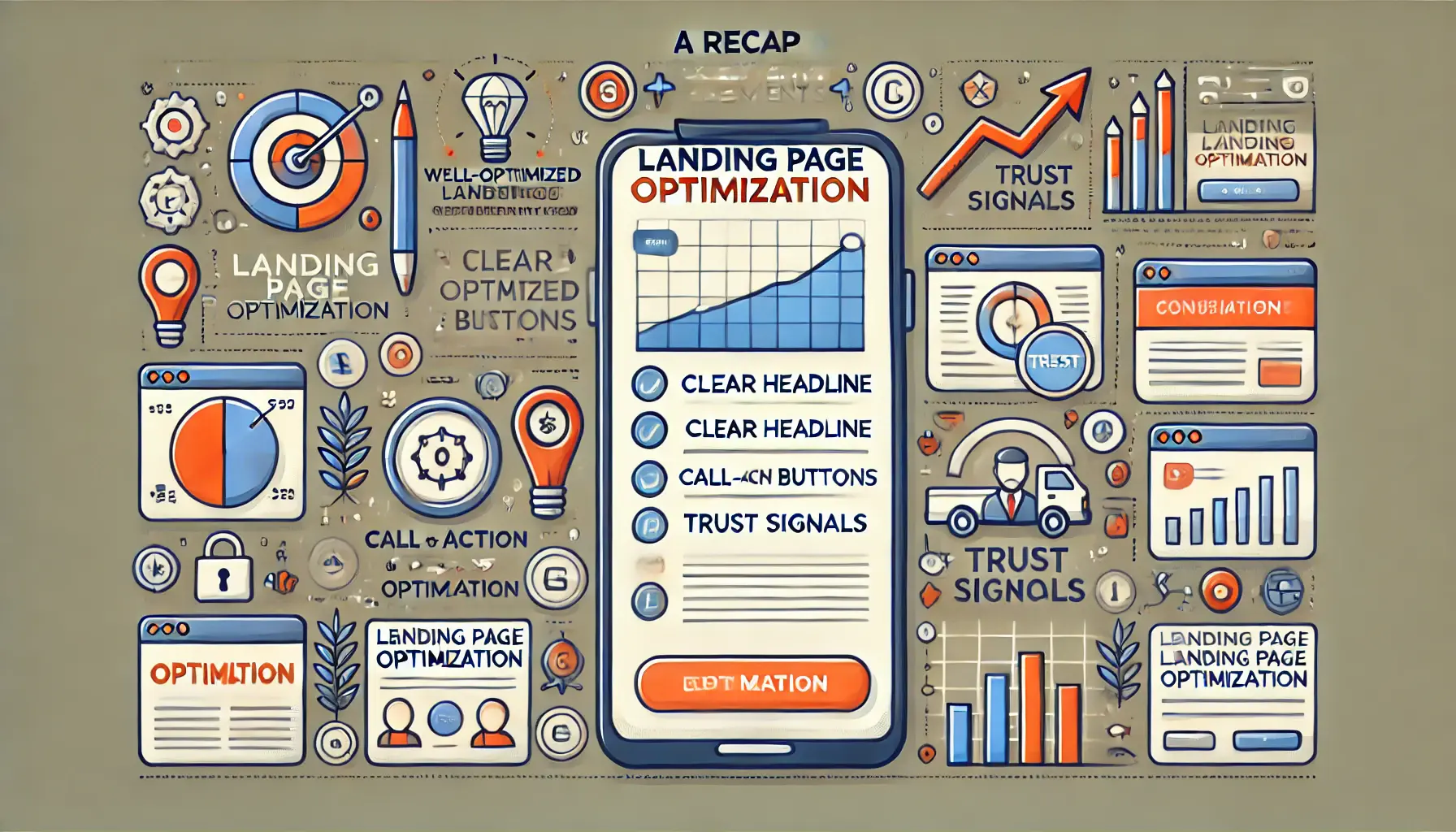
Illustration summarizing the key elements of landing page optimization for enhanced performance.
Landing Page Optimization Key Elements Recap
The process of landing page optimization encompasses several important components.
Below is a summary of the key factors that will help in optimizing a landing page:
- Effective Title and Value Proposition: Your headline must grab attention instantly, aligning with the user’s intent and communicating the value of your offer clearly.
- Design and UX: A clean design and good user experience encourage users to interact with your content. Use white space effectively, and ensure that your page is visually appealing and easy to navigate.
- Trust Signals and Social Proof: Building trust is critical. Add testimonials, case studies, and security badges to make your page credible and persuasive.
- Mobile Responsiveness: With a growing number of users accessing content on mobile devices, having a responsive landing page that loads efficiently on every device is essential.
- Alignment with Ad Copy: Your landing page must fully align with your ad copy, ensuring that visitors find exactly what they expect after clicking the ad.
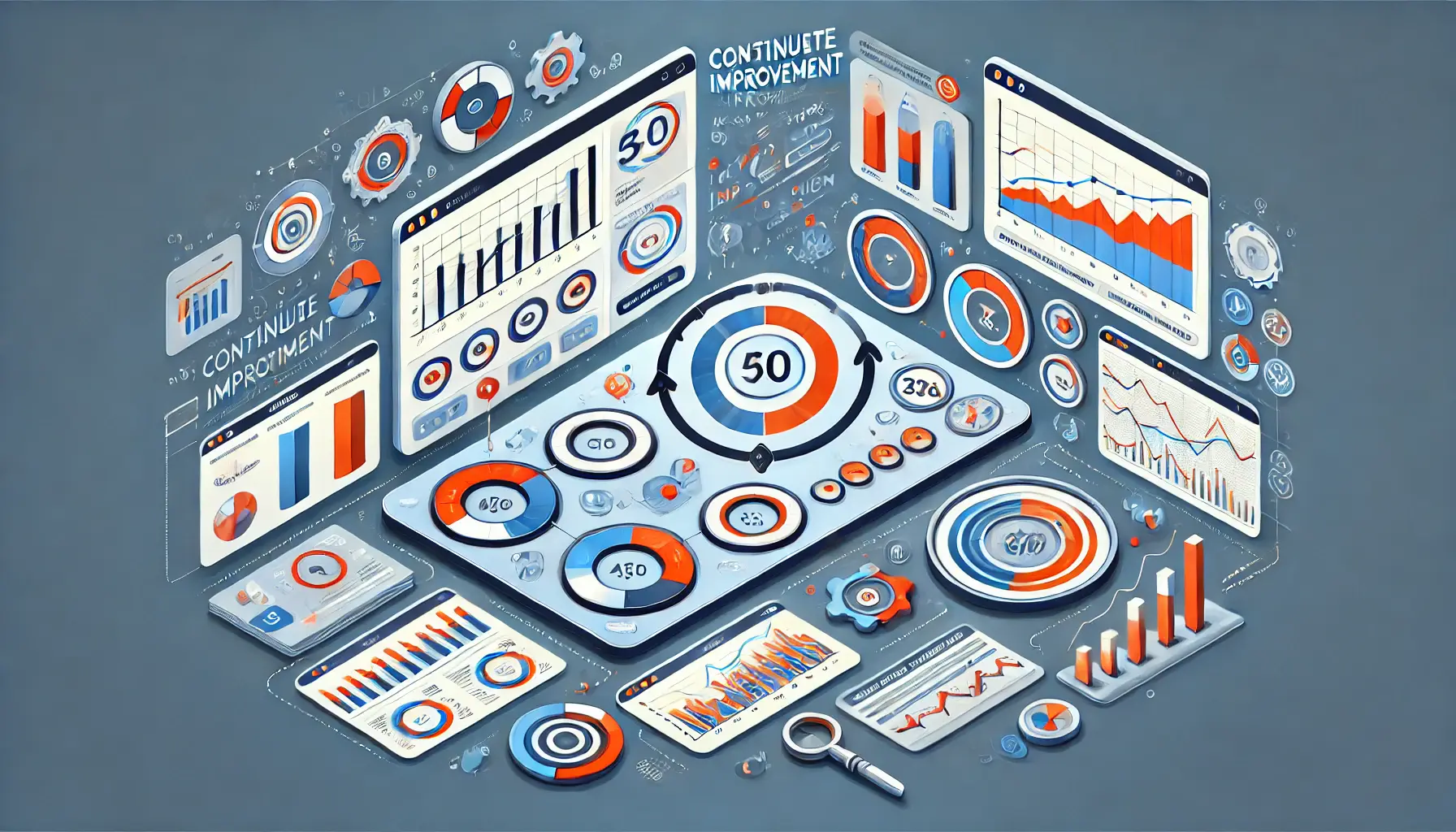
Illustration showing the importance of using tools and analytics for continuous improvement in landing page optimization.
Using Tools and Analytics for Continuous Improvement
Continually testing various elements of your landing page is vital for ongoing optimization.
Tools like Google Analytics, heatmaps, and A/B testingA method of comparing two versions of a webpage or app against each other to determine which performs better. platforms allow you to track performance and make data-driven decisions to enhance your page.
Key metrics to monitor include:
- Bounce rate: How many visitors leave your site after viewing just one page?
- Conversion rate: How many visitors complete the desired action, such as making a purchase or filling out a form?
- Engagement metrics: Track session duration, scroll depth, and other interactions to understand how users engage with your content.
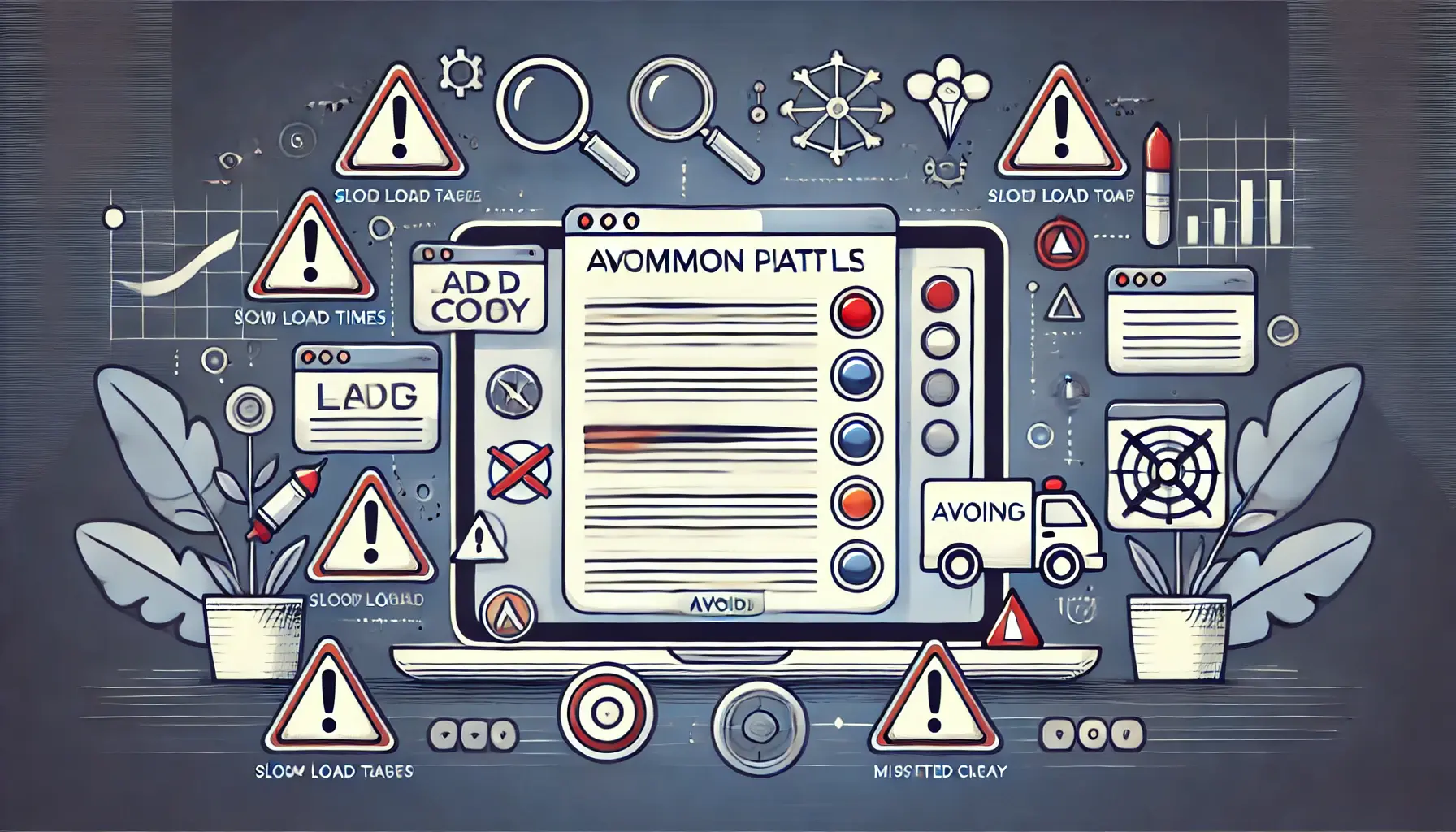
Illustration emphasizing the importance of avoiding common pitfalls in landing page optimization.
Avoiding Common Pitfalls
Even with a solid strategy in place, there are common mistakes that can undermine your optimization efforts.
Common pitfalls include mismatched ad copy and landing page content, overloading your page with too much information, and failing to optimize for mobile devices.
Avoiding these mistakes will help keep your landing page performing at its best.

Illustration reflecting the final thoughts on the importance of landing page optimization.
Final Thoughts
Landing page optimization is a critical component of any successful Google Ads strategy.
By focusing on factors such as aligning your page with ad copy, improving user experience, and continuously testing and refining your page, you can create a powerful conversion tool.
Remember, landing page optimization is not a one-time task but an ongoing process that requires attention and adaptation as user behavior and market trends evolve.
With the right approach, tools, and strategies, your Google Ads campaigns will drive greater results, leading to improved conversions and heightened engagement in your digital marketing strategy.
Landing page optimization is a continuous process that drives higher conversions and improves overall campaign performance.
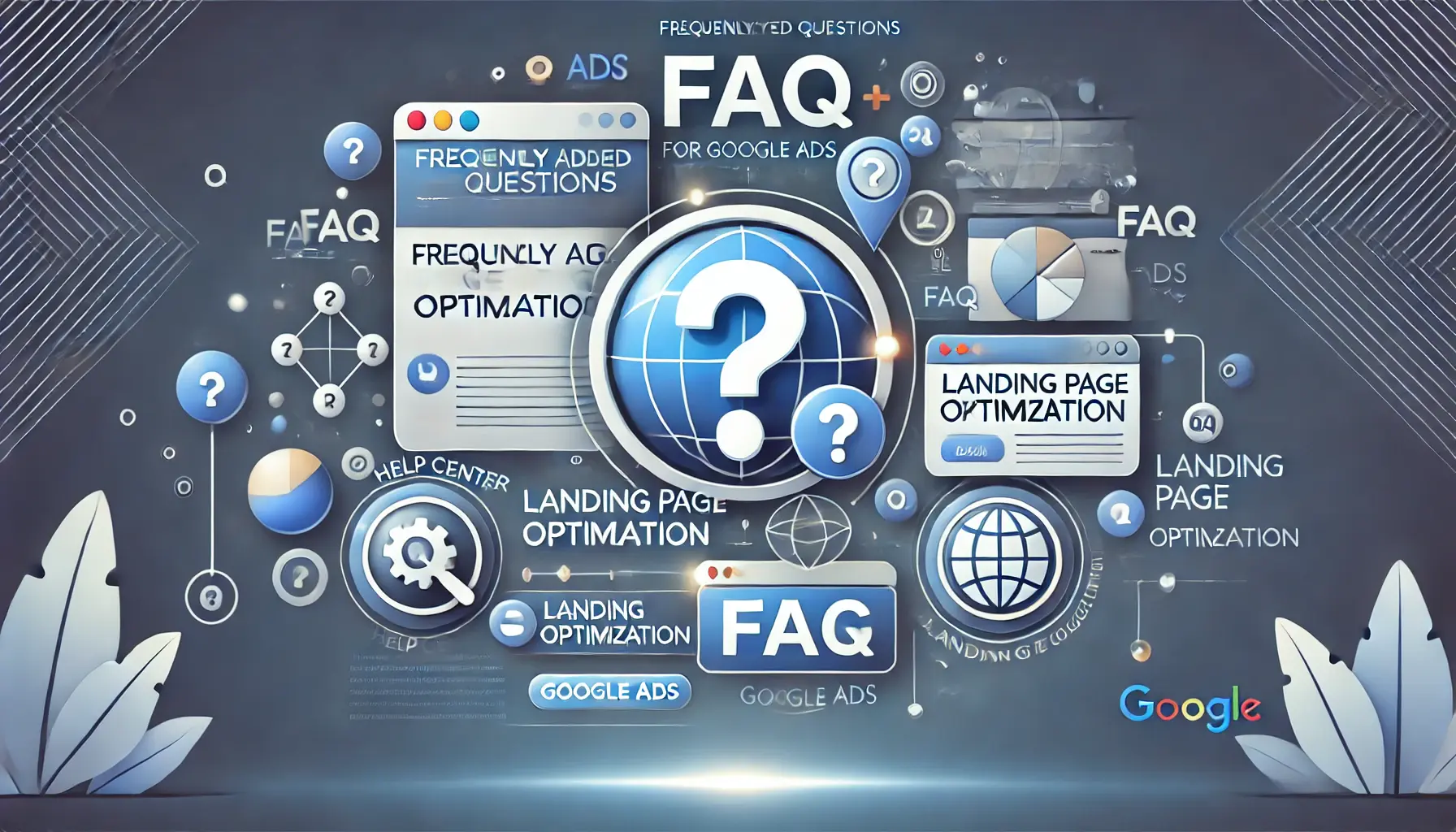
Illustration representing frequently asked questions (FAQs) related to landing page optimization for Google Ads.
Your campaigns can be managed by an agency specialized in Google Ads, check out our service page.
Frequently Asked Questions About Landing Page Optimization for Google Ads
Landing page optimization is an essential aspect of running successful Google Ads campaigns.
Below are some of the most frequently asked questions regarding how to optimize your landing pages to improve conversions and overall campaign performance.
Landing page optimization involves improving your landing page to increase conversion rates by aligning content with ad copy, improving user experience, and using tools to track and enhance performance.
An optimized landing page increases Quality Score, lowers cost-per-click (CPC), and improves ad rankings, leading to better ad visibility and higher conversions for your Google Ads campaigns.
Consistency between your ad copy and landing page ensures users find what they expect, reducing bounce rates and increasing conversions by delivering a cohesive experience from ad to page.
You should continuously test your landing page elements, such as headlines, images, and CTAs, using A/B testing or multivariate testing to regularly identify areas for improvement and optimize performance.
Popular tools like Google Analytics, heatmaps, and A/B testing platforms (e.g., Google Optimize, Unbounce) provide valuable insights into user behavior, helping you refine and improve your landing page.
To optimize for mobile, ensure your landing page is responsive, loads quickly, and delivers a seamless experience on different screen sizes, making it easy for mobile visitors to navigate and convert.
Important metrics include bounce rate, conversion rate, and engagement metrics like session duration and scroll depth, which help assess how well your landing page is performing.
Slow-loading pages increase bounce rates, as visitors tend to leave if the page takes too long to load.
Faster landing pages keep users engaged and boost conversion rates by providing a smoother experience.
The ideal length depends on your offer and target audience.
Keep the content concise and focused on your value proposition, addressing key points without overwhelming users with excessive information.
